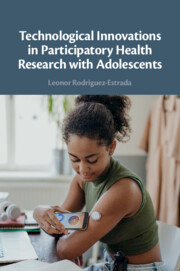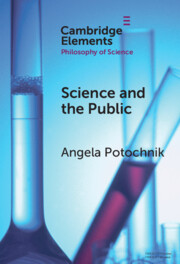Refine search
Actions for selected content:
64 results
Co-creating a toothbrushing intervention for adults with severe mental illness
-
- Journal:
- BJPsych Open / Volume 11 / Issue 6 / November 2025
- Published online by Cambridge University Press:
- 25 November 2025, e287
-
- Article
-
- You have access
- Open access
- HTML
- Export citation
Chapter 9 - Qualitative Research
- from Section 2 - Tools and Methodologies
-
-
- Book:
- Research Methods in Mental Health
- Published online:
- 31 October 2025
- Print publication:
- 20 November 2025, pp 135-155
-
- Chapter
- Export citation
Political representation from the people’s perspective: the problem-solving principal–agent partnership
-
- Journal:
- European Journal of Political Research ,
- Published online by Cambridge University Press:
- 01 October 2025, pp. 1-21
-
- Article
-
- You have access
- Open access
- HTML
- Export citation
Formative evaluation of an employee-driven approach to improve care in the dying phase in hospitals
-
- Journal:
- Palliative & Supportive Care / Volume 23 / 2025
- Published online by Cambridge University Press:
- 18 July 2025, e135
-
- Article
-
- You have access
- Open access
- HTML
- Export citation
Participatory assessment of minor crops: A situated study on hulled wheats
-
- Journal:
- Quantitative Plant Biology / Volume 6 / 2025
- Published online by Cambridge University Press:
- 04 July 2025, e21
-
- Article
-
- You have access
- Open access
- HTML
- Export citation
Activating the Climate Child Imaginary: Intergenerational Collaboration as a Long-term Strategy for Climate Justice Education
-
- Journal:
- Australian Journal of Environmental Education / Volume 41 / Issue 4 / September 2025
- Published online by Cambridge University Press:
- 16 June 2025, pp. 824-842
-
- Article
-
- You have access
- Open access
- HTML
- Export citation
Participatory democracy and participatory research
-
- Journal:
- European Political Science Review / Volume 17 / Issue 3 / August 2025
- Published online by Cambridge University Press:
- 14 May 2025, pp. 359-377
-
- Article
-
- You have access
- Open access
- HTML
- Export citation
Drivers and solutions to unhealthy food consumption by adolescents in urban slums, Kenya: a qualitative participatory study
-
- Journal:
- Public Health Nutrition / Volume 28 / Issue 1 / 2025
- Published online by Cambridge University Press:
- 03 April 2025, e123
-
- Article
-
- You have access
- Open access
- HTML
- Export citation
We Need to Talk about Racism: Co-constructing Research with Young People from Multilingual Chinese Backgrounds
-
- Journal:
- Journal of Race, Ethnicity and Politics , First View
- Published online by Cambridge University Press:
- 12 March 2025, pp. 1-17
-
- Article
-
- You have access
- Open access
- HTML
- Export citation
Raise Your Voice: How to Increase the Effectiveness of Resident and Family Councils in Long-Term Care Homes
-
- Journal:
- Canadian Journal on Aging / La Revue canadienne du vieillissement / Volume 44 / Issue 2 / June 2025
- Published online by Cambridge University Press:
- 04 March 2025, pp. 225-234
-
- Article
-
- You have access
- Open access
- HTML
- Export citation

Technological Innovations in Participatory Health Research with Adolescents
-
- Published online:
- 20 February 2025
- Print publication:
- 27 February 2025
Why participatory plant research now?
-
- Journal:
- Quantitative Plant Biology / Volume 6 / 2025
- Published online by Cambridge University Press:
- 13 February 2025, e4
-
- Article
-
- You have access
- Open access
- HTML
- Export citation
Stakeholders' perception on the role of extensive livestock farming in the fight against climate change
-
- Journal:
- Renewable Agriculture and Food Systems / Volume 39 / 2024
- Published online by Cambridge University Press:
- 15 October 2024, e21
-
- Article
-
- You have access
- Open access
- HTML
- Export citation
Eating Disorder and Autism Collaborative project outline: promoting eating disorder research embedded in a neurodiversity-affirming culture
-
- Journal:
- BJPsych Bulletin / Volume 49 / Issue 4 / August 2025
- Published online by Cambridge University Press:
- 08 August 2024, pp. 272-277
- Print publication:
- August 2025
-
- Article
-
- You have access
- Open access
- HTML
- Export citation
3 - (Re)claiming Knowledge
-
- Book:
- Speech and the City
- Published online:
- 23 May 2024
- Print publication:
- 30 May 2024, pp 41-55
-
- Chapter
- Export citation

Science and the Public
-
- Published online:
- 23 March 2024
- Print publication:
- 25 April 2024
-
- Element
- Export citation
Beyond individual responsibility – towards a relational understanding of financial resilience through participatory research and design
-
- Journal:
- Journal of Social Policy / Volume 54 / Issue 4 / October 2025
- Published online by Cambridge University Press:
- 23 January 2024, pp. 1225-1242
- Print publication:
- October 2025
-
- Article
-
- You have access
- Open access
- HTML
- Export citation
“The Last Piece of the Puzzle that Makes all the Difference in the World:” Team-Facing Medical-Legal Partnership for Reproductive Care Teams
-
- Journal:
- Journal of Law, Medicine & Ethics / Volume 51 / Issue 4 / Winter 2023
- Published online by Cambridge University Press:
- 13 March 2024, pp. 865-873
- Print publication:
- Winter 2023
-
- Article
- Export citation
Participatory action research with Inuit societies: A scoping review
-
- Journal:
- Polar Record / Volume 59 / 2023
- Published online by Cambridge University Press:
- 12 June 2023, e22
-
- Article
-
- You have access
- Open access
- HTML
- Export citation
5 - Researching Teacher Expertise in the Global South
-
- Book:
- Teacher Expertise in the Global South
- Published online:
- 18 May 2023
- Print publication:
- 01 June 2023, pp 65-86
-
- Chapter
- Export citation
